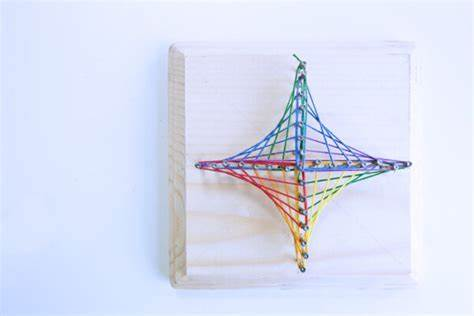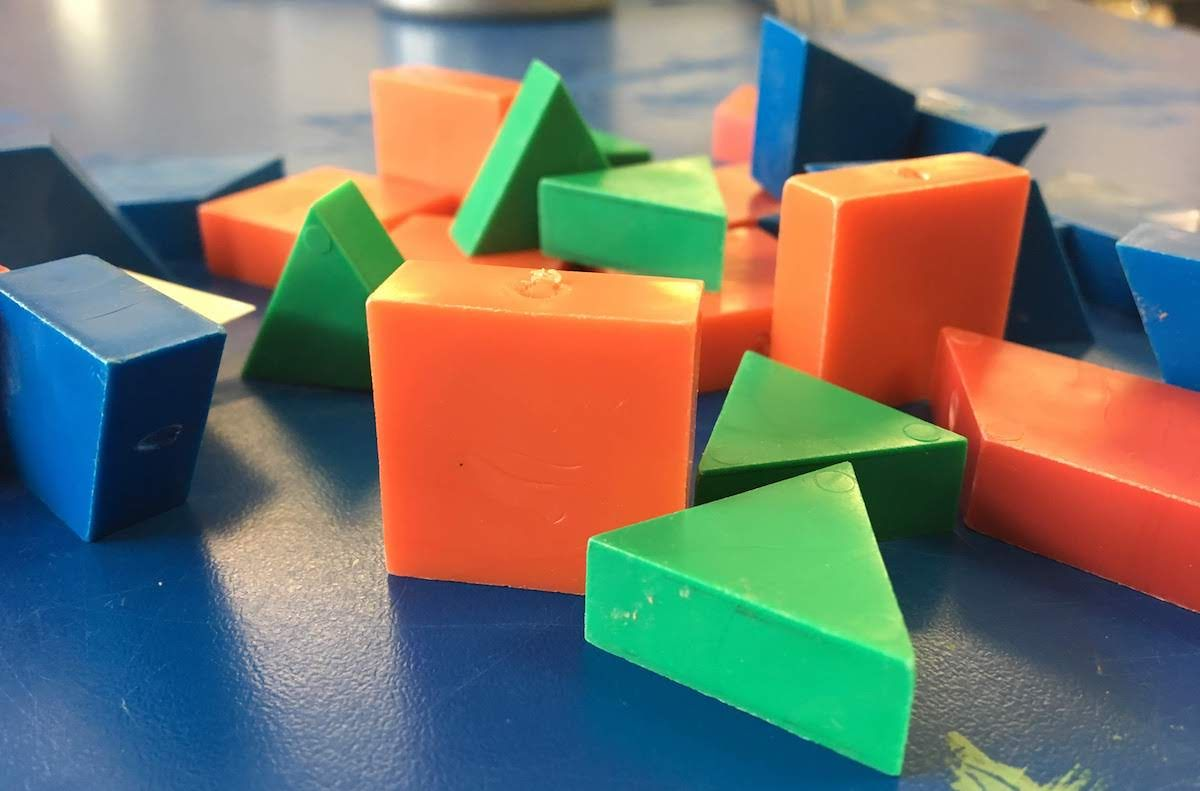Have you ever wondered if there is math in art? You must have if you are an artist or have a keen eye for artwork. The inclusion of math is one of the famous art facts!
Mathematics and art may at first seem like distant realms of human creativity, one governed by logic and the other by imagination. However, a closer examination reveals a fascinating interplay between these seemingly disparate disciplines.
Throughout history, artists have utilised mathematical principles to create visually stunning and intellectually stimulating works of art. Whether through precise geometric arrangements, the manipulation of proportions, or the exploration of symmetries, mathematics has been an essential tool in the artist's palette. This dynamic relationship between math and art has not only enriched the aesthetic experience but has also deepened our understanding of both fields.
We will delve into various examples of maths in art that have been woven into art, from classical masterpieces to contemporary works that continue to captivate and inspire. By examining these intersections, we gain a deeper appreciation for the intricate tapestry that unites mathematics and art in the realm of human creativity.

How to Understand Mathematics in Art

Understanding mathematics in art requires a keen eye for patterns, symmetry, proportions, and geometric shapes. Here are steps to help you appreciate the mathematical elements in artworks:
Develop a Basic Understanding of Geometry
Familiarise yourself with basic geometric shapes like circles, squares, triangles, and rectangles. Recognising these shapes in artworks can provide insights into an artist's use of geometry.
Study Proportions
Pay attention to how artists depict objects or figures in relation to their sizes and distances. The Golden Ratio, for example, is a mathematical concept that often appears in art and can be recognised by its pleasing and balanced proportions.
Identify Symmetry
Look for symmetrical elements in an artwork. Symmetry, whether bilateral (mirror image) or radial (repeating around a central point), is a mathematical principle often employed by artists to create balance and harmony.
Analyse Perspective and Depth
Understand how artists use perspective to create the illusion of depth on a two-dimensional surface. Linear perspective, for instance, relies on mathematical principles to accurately represent objects in space.
Explore Tessellations
Tessellations involve the repetition of geometric shapes without any gaps or overlaps. Artists like M.C. Escher were renowned for their intricate tessellations, which showcase the mathematical concept beautifully.
Observe Fractals
Fractals are complex geometric shapes that repeat infinitely at different scales. Some artists incorporate fractal patterns into their works, creating mesmerising and intricate designs.
Recognise Fibonacci Sequences
The Fibonacci sequence is a series of numbers where each number is the sum of the two preceding ones. This sequence often appears in nature and can also be found in certain artworks.
Learn about Optical Illusions
Optical illusions often rely on mathematical principles of perception and geometry. Understanding these illusions can help you appreciate the mathematical intricacies behind them.
Study Mathematical Art Movements
Some art movements, such as Constructivism and Op Art, explicitly incorporate mathematical concepts into their works. Learning about these movements can provide valuable insights into the relationship between math and art.
Strengthen your basics with a maths class 10 to understand the math behind art.
Practice Observation and Analysis
Take your time when viewing artwork. Observe details, patterns, and shapes. Ask yourself how mathematical principles might be at play in the composition.
Explore Digital Art and Algorithmic Art
With advancements in technology, artists now use algorithms and computer programs to create art. This form of art often heavily relies on mathematical computations and algorithms to generate visually striking images.
By incorporating these steps into your approach to art appreciation, you will be able to recognise and appreciate the mathematical elements that artists use to create their masterpieces.
Surprising Facts about Art

Here are some surprising facts about art that may pique your interest:
- Oldest Known Artwork: The oldest known figurative artwork is a cave painting found in Indonesia, dating back over 40,000 years. This discovery suggests that early humans were creating art much earlier than previously thought.
- Hidden Art in Toothpick Sculptures: Scott Weaver, an artist from California, spent over 35 years creating a toothpick sculpture of San Francisco. This intricate piece includes multiple ball runs and hidden details, making it a marvel of engineering and artistic skill.
- The Smallest Drawings: Microscopic artist Willard Wigan creates incredibly detailed sculptures that can fit within the eye of a needle or on a grain of rice. His work requires him to slow his heartbeat and work between heartbeats to avoid hand tremors.
- The Mona Lisa’s Value: The Mona Lisa, painted by Leonardo da Vinci, is one of the most valuable artworks in the world. As of my last knowledge update in September 2021, its insured value was estimated at over $860 million USD.
- Art Heists and Recoveries: The theft of famous artworks is not uncommon. However, some stolen pieces have been recovered years or even decades later. For instance, the painting "The Scream" by Edvard Munch was stolen twice, in 1994 and 2004, and both times it was eventually recovered.
- Artist Who Paints with His Tongue and Feet: Mariusz Kedzierski, born without arms, creates incredibly detailed and lifelike portraits using his tongue and feet. His determination and talent challenge the conventional notions of artistic ability.
- Yves Klein’s ‘Anthropometry’: French artist Yves Klein used naked female models as “living paintbrushes” in his ‘Anthropometry’ series. He would cover them in blue paint and have them press their bodies against a canvas, creating unique abstract artwork.
- Michelangelo’s ‘Non-finito’ Technique: Michelangelo often left some of his sculptures deliberately unfinished, a technique known as ‘non-finito’ in Italian. He believed it revealed the potential within the raw material and the artist's role in revealing the form.
- Banksy's Shredded Artwork: In 2018, the street artist Banksy rigged one of his artworks, "Girl with a Balloon," to self-destruct at a Sotheby's auction. After being sold for over a million pounds, the painting was partially shredded, creating a new piece of art that was subsequently renamed "Love is in the Bin."
- Astronaut David Scott’s Lunar Artwork: During the Apollo 15 mission in 1971, astronaut David Scott conducted an artistic experiment on the Moon. He dropped a feather and a geological hammer and demonstrated that in a vacuum environment, they fell at the same rate, highlighting Galileo’s principle.
These surprising facts underscore the incredible diversity and ingenuity found within the world of art, spanning centuries and encompassing a wide range of techniques and mediums. They showcase the limitless boundaries of human creativity and the ability of artists to push the boundaries of what is possible.
Most Famous Art Galleries in the World

Here are some of the most famous art galleries in the world, known for their extensive collections and cultural significance:
- The Louvre (Musée du Louvre) - Paris, France
Home to thousands of artworks, including the Mona Lisa and the Venus de Milo, the Louvre is one of the largest and most visited art museums in the world.
- The Metropolitan Museum of Art - New York City, USA
Often referred to as "The Met," this museum houses an extensive collection of art spanning thousands of years, with pieces from various cultures and periods.
- The Vatican Museums - Vatican City
Known for the Sistine Chapel ceiling painted by Michelangelo, the Vatican Museums hold an exceptional collection of art, including classical sculptures and Renaissance masterpieces.
- The British Museum - London, UK
While not exclusively an art museum, it houses a vast collection of art and antiquities from around the world, including the Rosetta Stone and the Elgin Marbles.
- The National Gallery - London, UK
Situated in Trafalgar Square, this museum is home to a rich collection of Western European paintings, including works by Leonardo da Vinci, Vincent van Gogh, and Johannes Vermeer.
- The Tate Modern - London, UK
This contemporary art museum is housed in a former power station and features an impressive collection of modern and contemporary artworks, including pieces by Picasso, Warhol, and Hockney.
- The Uffizi Gallery (Galleria degli Uffizi) - Florence, Italy
Renowned for its collection of Italian Renaissance art, the Uffizi Gallery houses works by Botticelli, Leonardo da Vinci, Michelangelo, and Raphael.
- The State Hermitage Museum - St. Petersburg, Russia
One of the largest and oldest museums in the world, the Hermitage boasts a vast collection of art, including works by Rembrandt, Leonardo da Vinci, and Michelangelo.
- The Rijksmuseum - Amsterdam, Netherlands
Focusing on Dutch Golden Age paintings, the Rijksmuseum features masterpieces by artists such as Rembrandt, Vermeer, and Frans Hals.
- The Museum of Modern Art (MoMA) - New York City, USA
MoMA is dedicated to modern and contemporary art, housing an extensive collection of works by artists like Jackson Pollock, Pablo Picasso, and Vincent van Gogh.
- The Guggenheim Museum - New York City, USA (and other locations worldwide)
Known for its distinctive spiral architecture designed by Frank Lloyd Wright, the Guggenheim showcases modern and contemporary art.
- The Art Institute of Chicago - Chicago, USA
Home to Grant Wood's "American Gothic" and an extensive collection of Impressionist and Post-Impressionist paintings, the Art Institute is one of the oldest and largest art museums in the United States.
These art galleries are celebrated for their exceptional collections, architectural significance, and contributions to the global appreciation of art and culture. Each offers a unique and enriching experience for art enthusiasts and visitors from around the world.
Popular Artists Around the World

Here is a list of some popular artists from various regions around the world, each known for their unique styles and contributions to the art world:
Leonardo da Vinci (Italy)
Renowned for masterpieces like the Mona Lisa and The Last Supper, Leonardo da Vinci was a polymath of the Italian Renaissance, excelling in various fields, including painting, sculpture, and engineering.
Vincent van Gogh (Netherlands)
Known for his expressive and emotionally charged paintings, Van Gogh's works, such as "Starry Night" and "Sunflowers," have become iconic in the world of art.
Pablo Picasso (Spain/France)
A pioneer of Cubism and a co-founder of the Surrealist movement, Picasso's influence on 20th-century art is immeasurable. His paintings like "Guernica" and "Les Demoiselles d'Avignon" are celebrated worldwide.
Claude Monet (France)
A leading figure of Impressionism, Monet's "Water Lilies" series and landscapes like "Impression, Sunrise" are celebrated for their innovative use of light and colour.
Frida Kahlo (Mexico)
Known for her self-portraits and vibrant depictions of Mexican culture, Kahlo's art often explores themes of identity, pain, and resilience.
Georgia O'Keeffe (USA)
O'Keeffe is known for her large-scale, close-up paintings of flowers, New York skyscrapers, and New Mexico landscapes, which often border on abstraction.
Salvador Dalí (Spain)
A leading figure in the Surrealist movement, Dalí's eccentric and dreamlike paintings, such as "The Persistence of Memory," are instantly recognisable.
Hokusai (Japan)
Famous for his woodblock print series "Thirty-Six Views of Mount Fuji," Hokusai's intricate prints and detailed compositions have had a significant impact on Western art.
Yayoi Kusama (Japan)
A leading figure in the avant-garde art world, Kusama is known for her immersive installations, vibrant polka dot motifs, and contributions to Pop Art and Minimalism.
Banksy (UK)
An anonymous street artist, Banksy is known for his politically charged and satirical murals, which often critique societal issues.
Ai Weiwei (China)
A contemporary artist and activist, Ai Weiwei's works often tackle social and political issues in China, and he's known for his installations, sculptures, and conceptual art.
Rene Magritte (Belgium)
A key figure in Surrealism, Magritte is known for his thought-provoking and enigmatic paintings like "The Son of Man" and "The Treachery of Images."
These artists have left an indelible mark on the world of art, influencing generations of artists and captivating audiences with their unique perspectives and creative prowess. Their contributions continue to shape the artistic landscape globally.
















